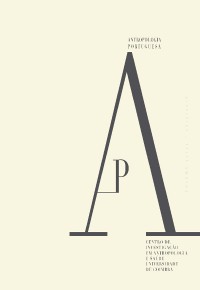Please use this identifier to cite or link to this item:
https://hdl.handle.net/10316.2/42123| DC Field | Value | Language |
|---|---|---|
| dc.contributor.author | Alves, Rute V. | - |
| dc.contributor.author | Garcia, Susana J. | - |
| dc.contributor.author | Marques, António | - |
| dc.contributor.author | Wasterlain, Sofia N. | - |
| dc.date.accessioned | 2017-06-16T10:59:22Z | |
| dc.date.accessioned | 2020-09-15T08:02:02Z | - |
| dc.date.available | 2017-06-16T10:59:22Z | |
| dc.date.available | 2020-09-15T08:02:02Z | - |
| dc.date.issued | 2016 | - |
| dc.identifier.issn | 0870-0990 | - |
| dc.identifier.issn | 2182-7982 (PDF) | - |
| dc.identifier.uri | https://hdl.handle.net/10316.2/42123 | - |
| dc.description.abstract | This paper presents the osteological analysis of a young adult exhumed from the cemetery associated to Igreja do Carmo, Lisbon, Portugal, during the second archaeological intervention in 2010/2011. Although the cemetery had been used between the beginning of the 15th century and 1755 AD, the archaeological context of the burial allows us to gauge its dating between the 17th and the 18th centuries. The skeleton is distinguished by a cranial morphology suggestive of an African origin and intentional dental modifications. These consist of the removal of both incisal angles of the upper incisors, which corresponds to a practice related to culture, commonly made in sub-Saharan Africa since prehistoric times. A periapical lesion was associated to the maxillary right central incisor that was apparently healthy but modified. The left clavicle showed bone remodelling along the shaft. Five ribs displayed new bone deposition, and the sternal end of the first left rib was deformed and destroyed. The differential diagnosis of the lesions gave rise to several possible pathological conditions, namely, treponematosis and chronic respiratory disease, particularly tuberculosis. Various macroscopic aspects and the geographical context lead us to consider venereal syphilis as the most probable diagnosis. Considering that, during the 16th century, Lisbon had become a fundamental part of the intercontinental maritime routes, it is not surprising that African people were buried in the cemeteries of Lisbon, allowing us to learn more about their lives and deaths. | eng |
| dc.description.abstract | Neste trabalho apresenta-se a análise osteobiográfica de um jovem adulto exumado do cemitério associado à Igreja do Carmo, Lisboa, durante a 2.ª campanha de intervenções arqueológicas decorrida em 2010/2011. Ainda que o cemitério tenha sido usado entre inícios do século XV e 1755 A.D., o contexto arqueológico da sepultura permite-nos balizar a sua datação entre os séculos XVII e XVIII. O esqueleto destaca-se pela morfologia craniana sugestiva de uma origem africana e pelas modificações dentárias intencionais. Estas consistem na remoção de ambos os ângulos incisais dos incisivos superiores, o que corresponde a uma prática cultural, comummente efetuada na África subsariana desde tempos pré-históricos. De destacar uma lesão periapical associada ao incisivo central superior direito, que se encontra hígido mas modificado. A diáfise da clavícula esquerda exibe reação óssea remodelada do periósteo, cinco costelas apresentam formação óssea incorporada no periósteo ao longo do colo e a articulação esternal da primeira costela esquerda encontra-se deformada. Várias condições patológicas foram consideradas aquando do diagnóstico diferencial destas lesões, nomeadamente as treponematoses e a doença respiratória crónica, particularmente a tuberculose. As características macroscópicas das lesões e o contexto geográfico dos achados favorecem o diagnóstico de sífilis venérea. Considerando que, durante o século XVI, Lisboa se tornou num eixo fundamental das rotas marítimas intercontinentais, não é de estranhar que pessoas africanas tenham sido sepultadas nos cemitérios de Lisboa, permitindo-nos reconstruir as suas vidas e mortes. | por |
| dc.language.iso | eng | - |
| dc.publisher | Imprensa da Universidade de Coimbra | - |
| dc.rights | open access | - |
| dc.subject | Cultural body modifications | eng |
| dc.subject | venereal syphilis | eng |
| dc.subject | Modern Age | eng |
| dc.subject | Africans | eng |
| dc.subject | Portugal | eng |
| dc.subject | Modificações corporais culturais | por |
| dc.subject | sífilis venérea | por |
| dc.subject | Idade Moderna | por |
| dc.subject | africanos | por |
| dc.subject | Portugal | por |
| dc.title | Osteological analysis of a skeleton with intentional dental modifications, exhumed from Largo do Carmo (17th–18th centuries), Lisbon | por |
| dc.title.alternative | Análise osteológica de um esqueleto com modificações dentárias intencionais, exumado do Largo do Carmo (séculos XVII - XVIII), Lisboa | eng |
| dc.type | article | - |
| uc.publication.collection | Antropologia Portuguesa vol. 32/33 | - |
| uc.publication.firstPage | 61 | - |
| uc.publication.lastPage | 75 | - |
| uc.publication.location | Coimbra | - |
| uc.publication.journalTitle | Antropologia Portuguesa | - |
| uc.publication.volume | 32/33 | por |
| dc.identifier.doi | 10.14195/2182-7982_32_4 | - |
| uc.publication.digCollection | IP | - |
| uc.publication.digCollection | B1 | - |
| uc.publication.orderno | 5 | - |
| uc.publication.area | Ciências Sociais | - |
| uc.publication.manifest | https://dl.uc.pt/json/iiif/10316.2/42123/215302/manifest?manifest=/json/iiif/10316.2/42123/215302/manifest | - |
| uc.publication.thumbnail | https://dl.uc.pt/retrieve/11228165 | - |
| uc.publication.parentItemId | 71167 | - |
| uc.itemId | 71164 | - |
| uc.thumbnail.uri | https://dl.uc.pt/iiif-imgsrv/11228133/dl!3!16!94!83!169483672485638627510681686155598229012 | - |
| item.fulltext | With Fulltext | - |
| item.grantfulltext | open | - |
| Appears in Collections: | Antropologia Portuguesa | |
Files in This Item:
| File | Description | Size | Format | |
|---|---|---|---|---|
| osteological_analysis_of_a_skeleton_with_intentional.pdf | 1.82 MB | Adobe PDF |  |
Items in DSpace are protected by copyright, with all rights reserved, unless otherwise indicated.
